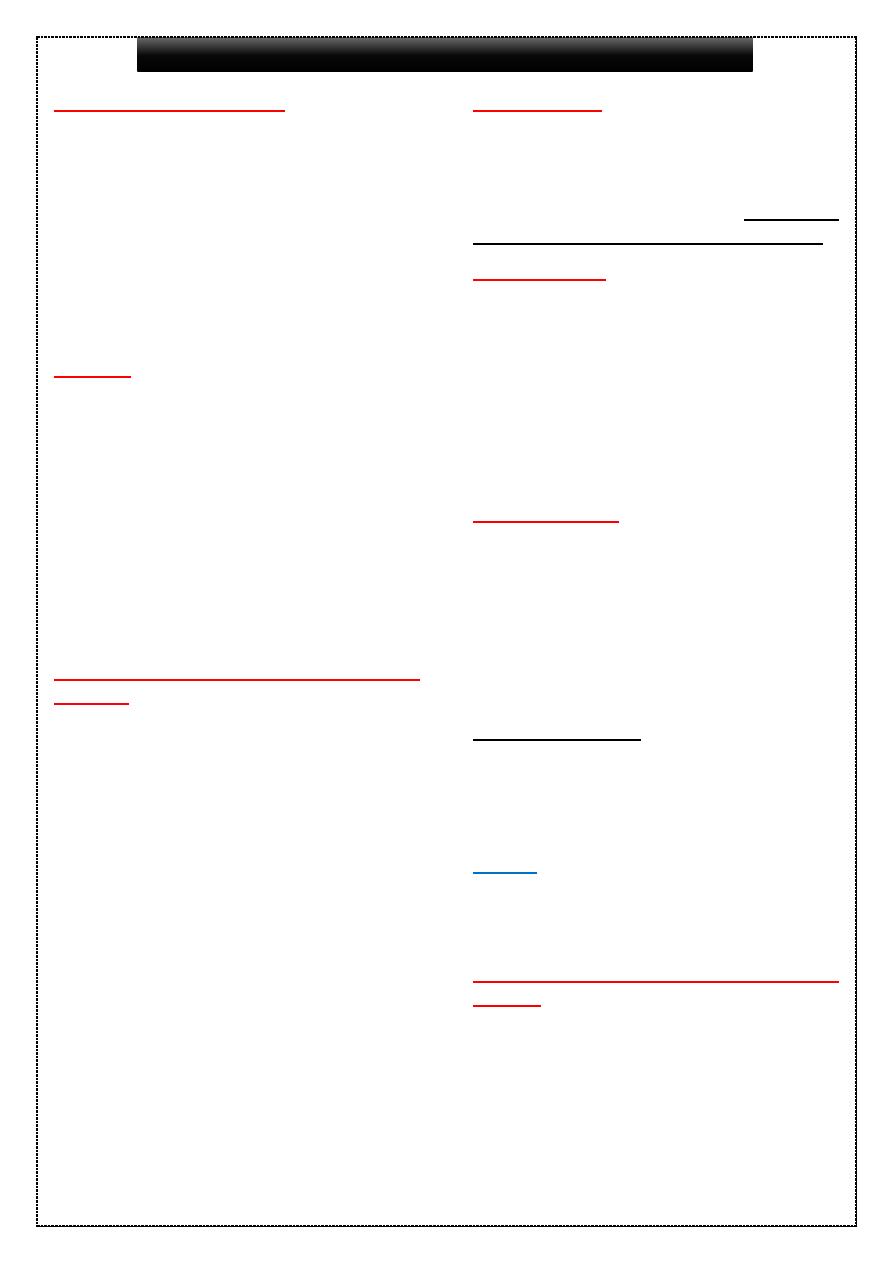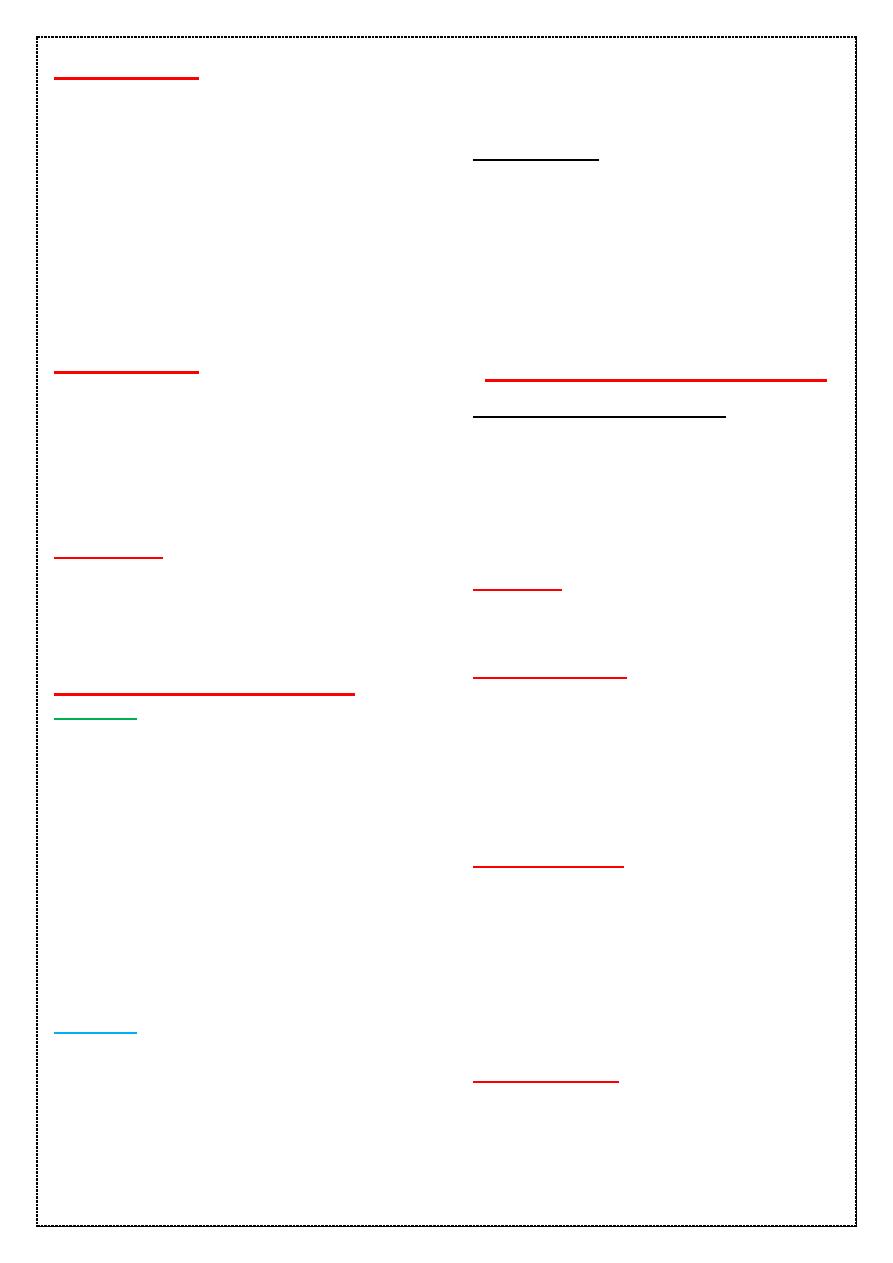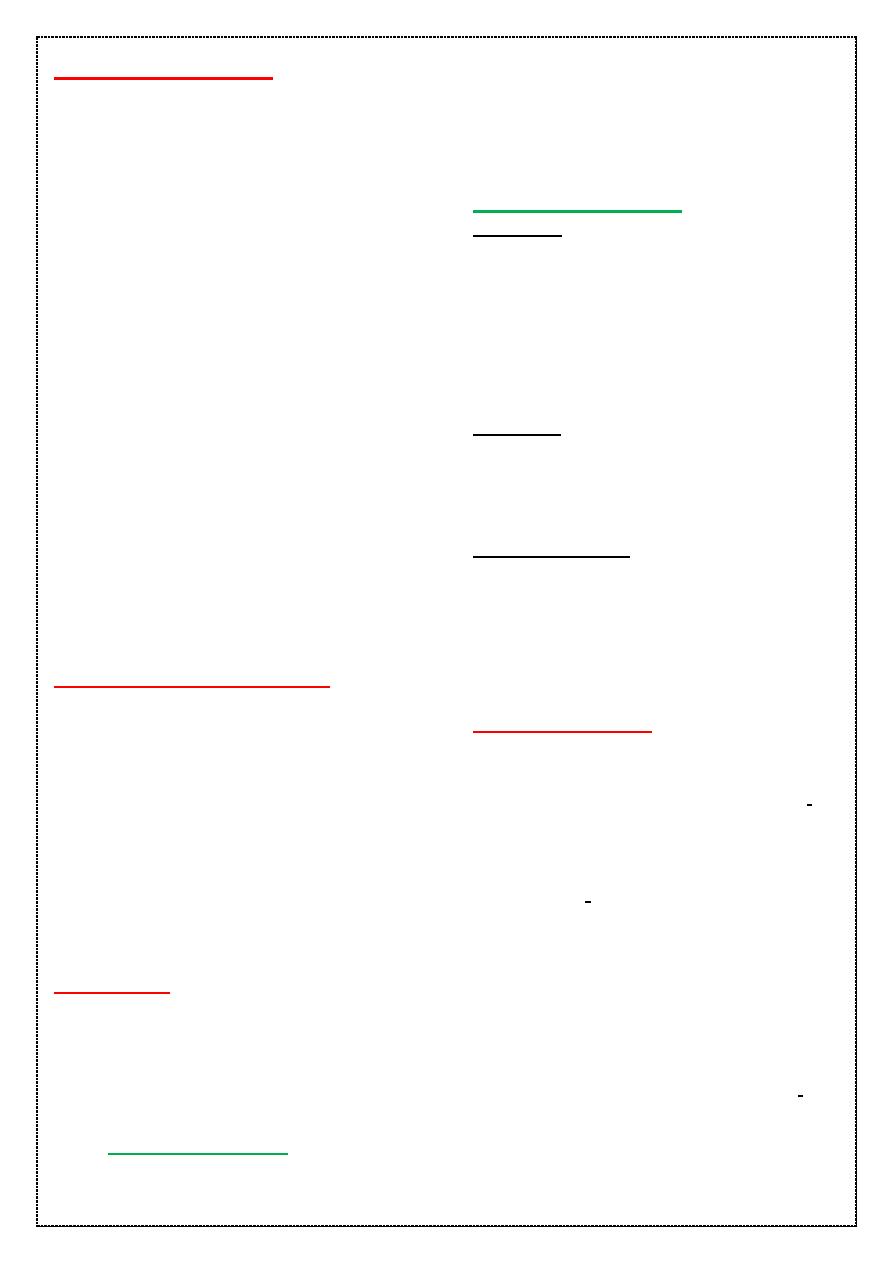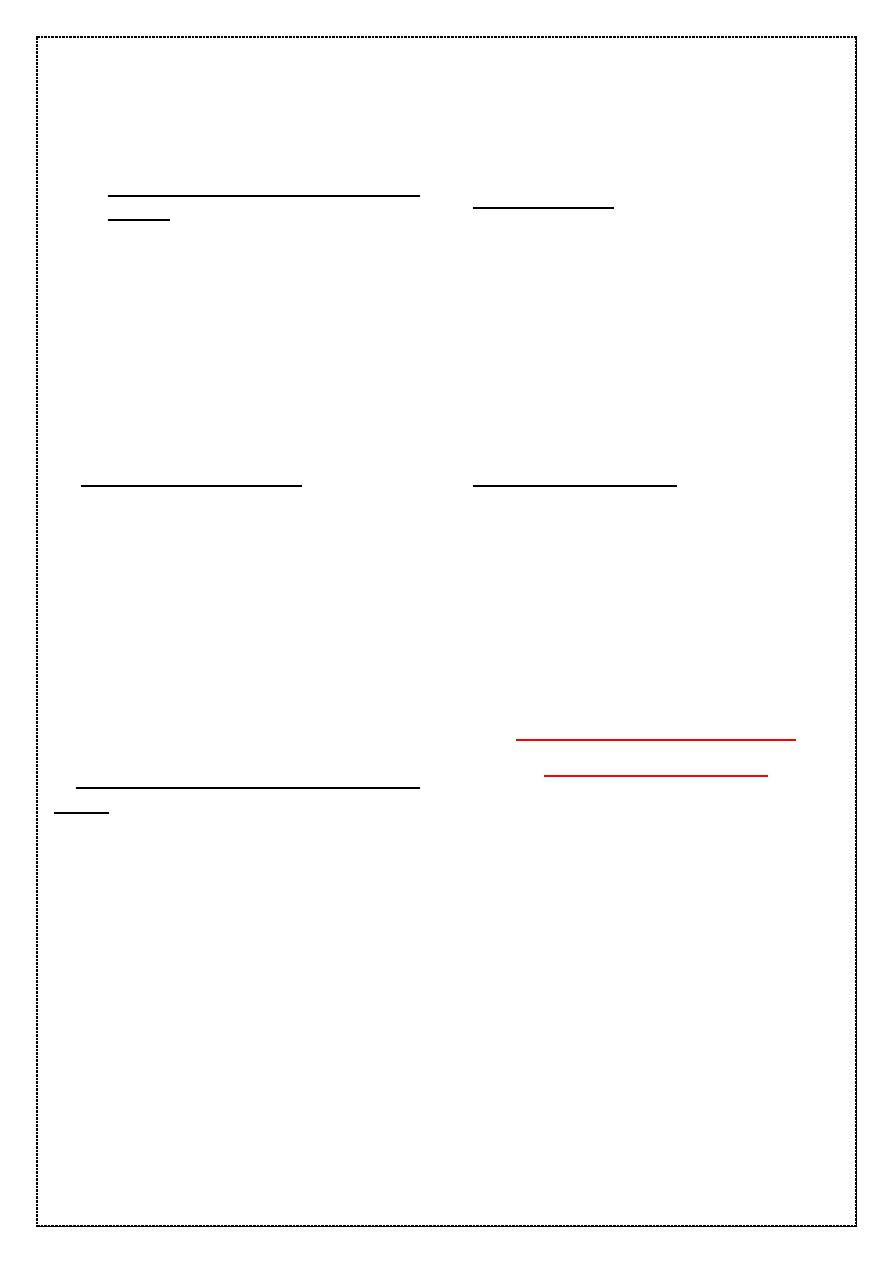
Pulmonary Hypertension
Pulmonary hypertension is an increase in
pulmonary arterial pressure above normal
values due to structural or functional
changes in the pulmonary vasculature.
Primary pulmonary hypertension occurs in
cattle with high-altitude disease. Chronic
pulmonary hypertension results in right-
Side congestive heart failure due to right
ventricular hypertrophy
Etiology
Hypoxemia is a potent stimulus of
pulmonary
arterial
pressure
through
increased pulmonary vascular resistance
induced by pulmonary vasoconstriction.
Pulmonary artery pressure can also
increase in response to increases in
cardiac output.
Alveolar hypoxia causes constriction of the
precapillary pulmonary vessels, resulting
in pulmonary hypertension.
Condition which may induce hypoxia
include:
1- Exposure to high altitude
2- Respiratory impairment secondary to
3- thoracic wall abnormalities
4- Airway obstruction
5- Pneumonia
6- Pulmonary edema
7- Emphysema
8- Pulmonary vascular disease
9- Heaves.
At high altitudes, the low inspired oxygen
tension
causes
hypoxic
pulmonary
vasoconstriction and hypertension that are
common causes of corpulmonale (brisket
disease) in cattle.
ATElECTASIS
Atelectasis is collapse of the alveoli due to
failure of the alveoli to inflate or because of
compression of the alveoli. Atelectasis is
therefore
classified
as
obstruction
(resorption), compression or contraction.
1- Obstruction
atelectasis
occurs
secondary
to
obstruction
of
the
airways,
with
subsequent resorption of alveolar gases
and collapse of the alveoli. This disease is
usually caused by obstruction of small
bronchioles by fluid and exudate. It is
common in animals with pneumonia or
aspiration pneumonia.
2-
Compression
atelectasis occurs when intrathoracic
(intrapleural) pressure exceeds alveolar
pressure, thereby deflating alveoli. This
occurs when there is excessive pleural
fluid or the animal has a pneumothorax. In
large animals it also occurs in the
dependent lung or portions of lung in
recumbent animals.
The clinical signs of atelectasis are not
apparent
until
there
is
extensive
involvement of the lungs. Animals develop
respiratory
distress,
tachypnea,
tachycardia and cyanosis.
Note /
Atelectasis is reversible if the
primary obstruction or compression is
relieved
quickly
before
secondary
consolidation and fibrosis occur.
Acute respiratory distress syndrome
(ARDS)
in animals occurs in newborns and in adult
animals. The disease in some newborn
farm animals is related to lack of
surfactant.
The
causes
can
be
infectious(e.g. influenza virus infection),
chemical (smoke inhalation) or toxic such
as endotoxemia.
Asmat J. Jamel
-
2018/ Dr
-
/ 2017
nd
/course 2
th
Vet. College of Kirkuk/ Medicine / stage 4

pathogenesis
involves a common final pathway that
results in damage to alveolar capillaries.
The initial injury can be to either the
endothelium of pulmonary capillaries or to
alveolar epithelium. Damage to these
structures leads to extravasation of
protein-rich fluid and fibrin with subsequent
deposition of hyaline membranes leading
to impair respiratory gas exchanges &
cause hypoxemia.
Clinical sings
The clinical signs are characteristic of
acute, progressive pneumonia. Animals
are anxious, tachycardic, tachypneic and
have crackles and wheezes on thoracic
auscultation. Severely affected animals
can be cyanotic.
Treatment
includes
administration
of
anti-
inflammatory drugs (NSAlDs with or
without
glucocorticoids),
colloids,
antimicrobials and oxygen therapy.
PULMONARY HEMORRHAG
Etiology:
Pulmonary
hemorrhage is
uncommon in farm animals but does occur
occasionally in cattie, and exercise-
induced pulmonary hemorrhage (EIPH)
occurs in 45-75% of exercised horses.
Pulmonary hemorrhage also occurs in
horses with pulmonary abscesses, tumors
or foreign bodies.
Tracheo-bronchoscopy, radiographic and
ultrasonographic examinations are useful
in identifying the site and cause of the
hemorrhage.
In cattle
the most common cause is
erosion of pulmonary vessels adjacent to
lesions of embolic pneumonia associated
with venacaval thrombosis and hepatic
abscessation.
The onset of hemorrhage
may be sudden and affected animals
hemorrhage profusely and die after a short
course of less than 1 hour.
Clinical signs
Marked epistaxis and hemoptysis, severe
dyspnea, muscular weakness and pallor of
the mucous membranes are characteristic.
In other cases, episodes of epistaxis and
hemoptysis may occur over a period of
several days or a few weeks along with a
history of dyspnea.
Diseases of pleura & diaphragm
Hydrothorax & hemothorax
The
accumulation
of
edematous
transudate or whole blood in the pleural
cavities is manifested by respiratory
embarrassment caused by collapse of the
ventral parts of the lungs.
Etiology
Hydrothorax and hemothorax occur as part
of a number of diseases.
1-Hydrothorax
As part of a general edema due to
congestive
heart
failure
or
hypoproteinemia
As part of African horse sickness or
bovine viral leucosis
Secondary to thoracic neoplasia
2-Hemothorax
Traumatic injury to thoracic wall, a
particular case of which is rib
fractures in newborn foals
During Lung biopsy
Incase of haemangiosacroma of
pleura
Excessive exercise in the horse
Pathogenesis
Accumulation of fluid in the pleural cavities
causes compression atelectasis of the
ventral portions of the lungs and the
degree of atelectasis governs the severity
of the resulting dyspnea. Compression of

the atria by fluid may cause an increase in
venous pressure in the great veins,
decreased cardiac return and reduced
cardiac output.
Extensive hemorrhage into the pleural
space can cause hemorrhagic shock.
CLINICAL FINDINGS
In both diseases there is an absence of
systemic
signs,
although
acute
hemorrhagic anemia may be present when
extensive bleeding occurs in the pleural
cavity. There is dyspnea, which usually
develops gradually, and an absence of
breath sounds, accompanied by dullness
on percussion over the lower parts of the
chest.
The accumulation of the fluid or blood is
evident
by
radiographic
or
ultrasonagraphic.
CLINICAL PATHOLOGY
Thoracocentesis may yield a flow of clear
serous fluid in hydrothorax, or blood in
recent cases of hemothorax. The fluid is
bacteriologically
negative
and
total
nucleated cell counts are low ( 5 x 10
9
/liter)
TREATMENT
1- Treatment of the primary condition
2- If the dyspnea is severe, aspiration
of fluid from the pleural sac causes a
temporary improvement but the fluid
usually re-accumulates rapidly.
3- blood
transfusion
in
severe
hemothorax.
PNEUMOTHORAX
Pneumothorax refers to the presence of air
(or other gas) in the pleural cavity. Entry of
air into the pleural cavity in sufficient
quantity causes collapse of the lung and
impaired respiratory gas change with
consequent respiratory distress.
Etiology
Pneumothorax is defined as either
spontaneous, traumatic, open, closed, or
tension.
Spontaneous cases occur without
any identifiable inciting event.
Open pneumothorax describes the
situation in which gas enters the
pleural space other than from a
ruptured or lacerated lung, such as
through an open wound in the chest
wall. Closed pneumothorax refers to
gas accumulation in the pleural
space in the absence of an open
chest
wound.
Tension
pneumothorax
occurs
when
a
wound acts as a one-way valve, with
air entering the pleural space during
inspiration but being prevented from
exiting during expiration by a valve-
like action of the wound margins.
The result is a rapid worsening of the
pneumothorax. The pneumothorax
can be unilateral or bilateral.
PATHOGENESIS
Entry of air into the pleural cavity results in
collapse of the lung. There can be partial
or complete collapse of the lung.
Collapse of the lung results in
alveolar hypoventilation, hypoxemia,
hypercapnia, cyanosis, dyspnea,
anxiety, and hyperresonance on
percussion of the affected thorax.
Tension pneumothorax can also
lead to a direct decrease in venous
return to the heart by compression
and collapse of the vena cava.
The degree of lung collapse varies
with the amount of air that enters the
cavity.
small amounts are absorbed very
quickly . but large amounts may
cause fatal anoxia.

CLINICAL FINDINGS
There is an acute onset of inspiratory
dyspnea, which may terminate fatally
within a few minutes if the pneumothorax is
bilateral and severe. If the collapse occurs
in only one pleural sac, the rib cage on the
affected side collapses and shows
decreased
movement.
There
is
a
compensatory increase in movement and
bulging of the chest wall on the unaffected
side. On auscultation of the thorax, the
breath sounds are markedly decreased in
intensity and commonly absent. The
mediastinum may bulge toward the
unaffected side and may cause moderate
displacement of the heart and the apex
beat, with accentuation of the heart sounds
and the apex beat. The heart sounds on
the affected side have a metallic note and
the apex beat may be absent. On
percussion of the thorax on the affected
side, a hyperresonance is detectable over
the dorsal aspects of the thorax.
PLEURITIS (PLE U R I SY)
Pleuritis refers to inflammation of the
parietal and visceral pleura. Inflammation
of the pleura almost always results in
accumulation of fluid in the pleural space.
Pleuritis is characterized by varying
degrees of toxemia, painful shallow
breathing, pleural friction sounds and dull
areas on acoustic percussion of the thorax
because of pleural effusion. Treatment is
often difficult because of the diffuse nature
of the inflammation.
ETIOLOGY
Pleuritis is almost always associated with
diseases of the lungs. Pneumonia can
progress to pleuritis, and pleuritis can
cause consolidation and infection of the
lungs.
Primary pleuritis
is usually due
to perforation of the pleural space
and subsequent infection. Most
commonly this occurs as a result of
trauma,l but it can occur in cattle with
traumatic reticuloperitonitis and in
any species after perforation of the
thoracic esophagus.
Secondary pleuritic
In Cattle :
Secondary
to
Mannheimia
haemolytica pneumonia in cattle.
Tuberculosis.
Sporadic bovine encephalomyelitis.
Contagious
bovine
pleuropneumonia.
In horse :
Rarely case in horse include
lymphosacroma , equine infectious
anemia
In sheep & goat :
Pleuropneumonia associated with
Mycoplasma
spp.,
including
Mycoplasma
mycoides
subsp.
Mycoides and Haemophilus spp.
Streptococcus dysgalactiae in ewes.
PATHOGENESIS
Contact and movement between the
parietal and visceral pleura causes pain
due to stimulation of pain end organs in the
pleura.
Respiratory
movements
are
restricted and the respiration is rapid and
shallow.
There
is
production
of
serofibrinous inflammatory exudate, which
collects in the pleural cavities and causes
collapse of the ventral parts of the lungs,
thus reducing vital capacity and interfering
with
gaseous
exchange.
If
the
accumulation is sufficiently severe there
may be pressure on the atria and a
diminished return of blood to the heart.
Clinical signs may be restricted to one side
of the chest in all species with an
imperforate mediastinum. Fluid is resorbed
in animals that survive the acute disease
and
adhesions
develop,
restricting

movement of the lungs and chest wall but
interference with respiratory exchange is
usually minor and disappears gradually as
the adhesions stretch with continuous
movement In all bacterial pleuritis, toxemia
is common and usually severe. The
toxemia may be severe when large
amounts of pus accumulate.
CLIN ICAL FINDINGS
The clinical findings of pleuritis vary from
mild to severe. depending on the species
and the nature and severity of the
inflammation. In peracute to acute stages
of pleuropneumonia there are fever,
toxemia,
tachycardia,
anorexia,
depression, nasal discharge, coughing,
exercise intolerance, breathing distress,
and flared nostrils. The nasal discharge
depends on the presence or absence of
pneumonia. It may be absent or copious
and
its
nature
may
vary
from
mucohemorrhagic to mucopurulent. The
odor of the breath may be putrid, which is
usually associated with an anaerobic
lesion.
Pleural
pain
(pleurodynia)
is
common and manifested as pawing,
stiff forelimb gait, abducted elbows
and reluctance to move or lie down.
In the early stages of pleuritis,
breathing is rapid and shallow,
markedly abdominal and movement
of the thoracic wall is restricted.
The breathing movements may
appear guarded, along with a catch
at
end-inspiration.
The
animal
stands with its elbows abducted and
is disinclined to move.
The application of hand pressure on
the thoracic wall and deep digital
palpation of intercostal spaces
usually causes pain manifested by a
grunting sound , a spasm of the
intercostal muscles also this may be
audible over the area friction sounds
during the initial stage of the disease
they are not audible when fluid
accumulates in the pleural space
Subcutaneous edema of the ventral
body wall extending from the
pectorals to the prepubic area is
common in horses with severe
pleuritis Presumably this edema is
due to blockage of lymphatics
normally drained through the cranial
lymph nodes.
Pleural effusion due to exudate In
cattle, an inflammatory pleural
effusion is often limited to one side
because the pleural sacs do not
communicate.
Bilateral
pleural
effusion
may
indicate either a bilateral pulmonary
disease
process
or
non-
inflammatory abnormality such as
right- sided congestive heart failure
or hypoproteinemia, Also Dullness
on the percussion the area over the
fluid -filled area of the thorax is
characteristic of pleuritis
In the presence pleural effusion both
normal & abnormal lung sound are
diminished in intensity depending on
the amount of effusion.
Dyspnea may still be evident,
particularly during inspiration
Animals
with
pleuritis
characteristically
recover
slowly
over a period of several days or even
weeks.
The toxemia usually resolves first
but abnormalities in the thorax
remain for some time because of the
presence of adhesions and variable
amounts of pleural effusion
Rupture of the adhesions during
severe exertion may cause fatal
hemothorax.

Chronic pleurisy, as occurs in
tuberculosis in cattle and in pigs, is
usually subclinical, with no acute
inflammation or fluid exudation
occurring
Diagnosis
1- Clinical signs & examination of the
animal (percussion & palpation )
2- Medical
energy
such
as
radiographic, ultrasonographic &
pleuroscopy
Note / ultrasonographic more realable
for detection of pleural fluid in horse and
cattle than radiographic
3- Clinical pathology which include
thoracentesis (pleurocentesis) to
obtain a sample of the fluid for
laboratory examination is necessary
for a definitive diagnosis. The fluid is
examined for its odor, color and
viscosity, protein concentration and
presence of blood or tumor cells,
and is cultured for bacteria. It is
important to determine whether the
fluid is an exudate or a transudate.
Pleural fluid from horses affected
with
anaerobic
bacterial
pleuropneumonia may be foul-
smelling. Examination of the pleural
fluid usually reveals an increase in
leukocytes up to and protein
concentrations of up to 50 giL
The fluid should be cultured for both
anaerobic & aerobic bacteria &
mycoplasma spp.
4- hematological
examination
in
peracute bacterial pleuropneumonia
in horses and cattle, leukopenia and
neutropenia with toxic neutrophils
are common.
In acute pleuritis with severe
toxemia,
hemoconcentration,
neutropenia with a left shift and toxic
neutrophils are common.
In subacute and chronic stages
normal to high leukocyte counts are
often present. Hyperfibrinogenemia,
decreased albumin-globulin ratio
and anemia are common in chronic
pleuropneumonia.
DIFFERENTIAL DIAGNOSIS
• The presence of inflammatory fluid in the
pleural cavity
• Pleural friction sounds, common in the
early stages of pleuritis and loud and
abrasive; they sound very close to the
surface, do not fluctuate with coughing
common in the early stages and may
continue to be detectable throughout the
effusion stage
• The presence of dull areas and a
horizontal fluid line on acoustic percussion
of the lower aspects of the thorax,
characteristic of pleuritis and the presence
of pleural fluid
• Thoracic pain, fever and toxemia are
common.
The diseases include
1- Pneumonia occurs commonly in
conjunction
with
pleuritis
and
differentiation is difficult and often
unnecessary.
The
increased
intensity
of
breath
sounds
associated with consolidation and
the presence of crackles and
wheezes
are
characteristic
of
pneumonia.
2- Pulmonary
emphysema
is
characterized by loud crackles,
expiratory
dyspnea,
hyperresonance of the thorax and
lack of toxemia unless associated
with bacterial pneumonia.
3- Hydrothorax and hemothorax are
not usually accompanied by fever or
toxemia and pain and pleuritic
friction sounds are not present.
Aspiration of fluid by needle

puncture can be attempted if doubt
exists. A pleural effusion consisting
of a transudate may occur in
corpulmonale
due
to
chronic
interstitial pneumonia in cattle.
4- Pulmonary
congestion
and
edema are manifested by increased
vesicular
murmur
and
ventral
consolidation without hydrothorax or
pleural inflammation.
TREATMENT
The principles of treatment of pleuritis are
a- pain control
b- elimination of infection
c- prevention of complications.
1-Antimicrobial therapy The primary
aim of treatment is to control the
infection in the pleural cavities using the
systemic
administration
of
antimicrobials'
which
should
be
selected on the basis of culture and
sensitivity of pathogens from the pleural
fluid. Before the antimicrobial sensitivity
results are available it is recommended
that broad spectrum antimicrobials be
used. Long term therapy daily for
several weeks may be necessary.
2-Drainage and lavage of pleural
cavity Drainage of pleural fluid removes
exudate from the pleural cavity and allows
the lungs to re-expand. Criteria for
drainage include:
An initial poor response to treatment
Large amount of fluid causing
respiratory distress
Putrid pleural fluid
Bacteria in cells of the pleural fluid.
Pleural lavage may assist in removal
of fibrin, inflammatory debris, and
necrotic tissue; it can prevent
loculation, dilute thick pleural fluid
and facilitate drainage. One chest
tube is placed dorsally and one
ventrally; 5-10 L of sterile, warm
isotonic saline is infused into each
hemithorax by gravity flow. After the
infusion the chest tube is re
connected to the unidirectional value
& lavage fluid is allowed to drain.
3-Thoracotomy
has
been
used
successfully
for
the
treatment
of
pericarditis
and
pleuritis
and
lung
abscesses in cattle Claims are made for
the use of dexamethasone at 0.1 mg/kg
BW to reduce the degree of pleural
effusion. In acute cases of pleurisy in the
horse analgesics such as phenylbutazone
are valuable to relieve pain and anxiety,
allowing the horse to eat and drink more
normally.
4- Fibrinolytic therapy Pleural adhesions
are unavoidable and may become thick
and extensive with the formation of location
which traps to form of pleural fluid,
However Fibrinolytic agents such as
streptokinase promote removal, thickening
pleural fluid, lyse adhesion & facility
drainage of fluid.
EQUINE PLEUROPNEUMONIA
(PLEURITIS, PLEURISY)
Pleuropneumonia of horses is almost
always associated with bacterial infection
of the lungs, pleura, and pleural fluid.
Etiology Most infections are polymicrobial
combinations
of
S.
equi
var.
zooepidemicus,
Actinobacillus
sp.,
Pasteurella sp., Enterobacteriaceae
and
anaerobic bacteria, including
Bacillus
fragilis
. Disease due to infection by a
single bacterial species occurs. Other
causes are
Mycoplasma felis
, penetrating
chest wounds and esophageal perforation.

EPIDEMIOLOGY
Pleuropneumonia occurs worldwide in
horses of all ages and both sexes,
although most cases occur in horses more
than 1 and less than 5 years of age, The
case fatality rate varies between 5 - 65 %,
with the higher rate reported.
Recent prolonged transport, racing,
viral
respiratory
disease
&
anesthesia increase the incidence of
the disease in horse .
Aspiration
of
wound
material
secondary
to
esophageal
obstruction or dysphagia also cause
the disease.
PATHOGENESIS
Bacterial
pleuropneumonia
develops
following bacterial colonization of the lungs
with subsequent extension of infection to
the visceral pleura and pleural space
Organisms
initially
colonizing
the
pulmonary parenchyma and pleural space
are those normally present in the upper
airway, oral cavity, and pharynx, with
subsequent
infection
by
Enterobacteriaceae
and
obligate
anaerobic bacteria Bacterial colonization
and infection of the lower airway is
attributable to either massive challenge or
a reduction in the efficacy of normal
pulmonary defense mechanisms or a
combination of these factors.
Confinement the head elevated for
12-24 hours, such as occurs during
transport of horses or decreases
mucociliary transport and increases
the entering of thorax at difficult
location.
Bacterial multiplication in pulmonary
parenchyma is associated with the
influx
of
inflammatory
cells,
principally
neutrophils,
tissue
destruction and accumulation of cell
debris in alveoli and airways.
Infection spreads both through
tissue and via airways.
Infection spreads both through
tissue and via airways.
Extension of inflammation, and later
infection, to the visceral pleura and
subsequently pleural space causes
accumulation of excess fluid within
the pleural space.
Pleural fluid accumulates because
of a combination of excessive
production of fluid by damaged
pleural capillaries (exudation) and
impaired reabsorption of pleural fluid
by thoracic duct .
CLINICAL FINDING
The acute disease is characterized by the
sudden onset of a combination of fever,
depression, inappetence, cough, exercise
intolerance, respiratory distress, and nasal
discharge.
The respiratory rate is usually elevated as
is the heart rate.
Nasal
discharge
ranges
from
serosanguineous to mucopurulent, is
usually present in both nares and is
exacerbated when the horse lowers its
head.
TREATMENT
1- The principle treatment by using
broad
spectrum
antimicrobial
therapy such as Procaine penicillin
G 22,000
– 44,000 IU B.W, I.M. / 6
hrs
2- Thoracic drainage.
3- Pleural lavage.
RHINITIS
Rhinitis
(inflammation
of
the
nasal
mucosa) is characterized clinically by
sneezing, wheezing, and stertor during
inspiration and a nasal discharge that may
be serous, mucoid, or purulent in
consistency depending on the cause.

ETIOLOGY
Rhinitis usually occurs in conjunction with
inflammation of other parts of the
respiratory tract. It is present as a minor
lesion in most bacterial and viral
pneumonia such as:
In Cattle
1- Catarrhal rhinitis in infectious bovine
rhinotracheitis, adenoviruses.
2-Ulcerative/erosive rhinitis in bovine
malignant catarrh, mucosal disease,
rinderpest.
3-Rhinosporidiosis caused by fungal
infection.
4-Bovine nasal eosinophilic granuloma
due to Nocardia Sp.
In horse
Glanders,
strangles,
epizootic
lymphangitis
equine
infectious
rhinopneumonitis.
In sheep & goat
Blue tongue, orf, sheep pox, oestrus ovis
infestation,
allergic
rhinitis,
purulent
discharge
&
otitis
associated
with
pseudomonas
aerogenous
in
sheep
shower with contaminated wash.
PATHOGENESIS
Rhinitis is of minor importance as a
disease process except in severe
cases when it causes obstruction of
the passage of air through the nasal
cavities.
Its major importance is as an
indication of the presence of some
specific diseases.
The type of lesion produced is
important.
The erosive and ulcerative lesions of
rinderpest, bovine malignant catarrh
and mucosal disease, also lesions of
glanders, melioidosis, and epizootic
lymphangitis.
CLINICAL FINDINGS
The primary clinical finding in rhinitis
is a nasal discharge, which is usually
serous initially but soon becomes
mucoid and, in bacterial infections,
purulent. Erythema, erosion, or
ulceration may be visible on
inspection.
The inflammation may be unilateral
or
bilateral.
Sneezing
is
characteristic in the early acute
stages and this is followed in the
later stages by snorting and the
expulsion of large amounts of
mucopurulent discharge.
A chronic unilateral purulent nasal
discharge lasting several weeks or
months in horses suggests nasal
granulomas associated with mycotic
infections
Differential Diagnosis
Allergic
rhinitis
in
cattle
must
be
differentiated from fungal infection but
Rhinitis in the horse must be differentiated
from inflammation of the facial sinuses
TREATMENT
Specific treatment aimed at control of
individual
causative
agents.
Thick
tenacious exudate that is causing nasal
obstruction may be removed gently and
wash nasal cavities with saline.
Treatment
with
broad
spectrum
antimicrobial therapy.



